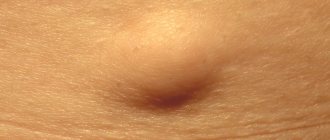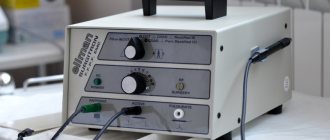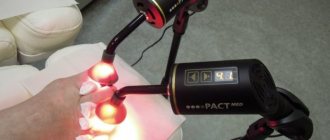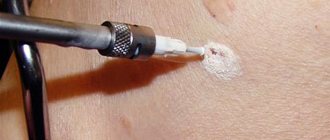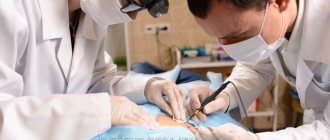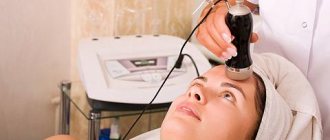From this article you will learn:
- How does laser removal of warts occur?
- What are the benefits of laser wart removal?
- What to choose: laser or nitrogen removal of warts
- How long does it take for a wart to heal after laser removal?
- What must be observed after removing a wart with a laser?
- What precautions does the wound require after laser removal of a wart?
There are several ways to remove warts. Most often, patients choose laser wart removal. The advantages are that it does not take much time and does not require long-term rehabilitation. In this article we will talk in more detail about the laser wart removal service.
How does laser removal of warts occur?
The most common skin disease is acne, followed by warts. Statistics say that 10% of people have the papilloma virus. The papillomavirus causes abnormal skin tissue, causing people to suffer from various diseases, ranging from warts to serious problems such as cervical cancer.
Warts come in different sizes: from 1 mm to 3 cm. They form on the mucous membranes, skin, and can be convex or flat. Once the virus has entered the human body, it cannot be removed and will remain for life. As soon as a person's immune system fails, a wart will appear.
Healthy people can easily become infected from carriers of the infection through shared objects, household appliances, or sexual contact. There is a high risk of infection on the beach, in the pool, sauna, bathhouse and other places where large numbers of people relax. The papillomavirus dies when exposed to sunlight, so the risk of infection in the evening and at night is significantly higher.
A person may not realize that he has become infected, even for several months, because signs of the disease appear only after 2-5 months. Not only a decrease in immunity provokes the appearance of warts, but also the following factors:
- Tight and uncomfortable, synthetic shoes.
- Sweaty feet.
- Metabolic disease.
- Endocrine pathology.
- Acrocyanosis of the limbs.
- Sudden hypothermia.
- Stress.
- Fungal and other infectious diseases.
- Insufficient hygiene.
- Lack of nutrients in the body.
- Casual sex.
- Failure to comply with the rules of asepsis and antiseptics during manicure and pedicure.
Laser removal of warts is carried out only after consultation with a dermatologist or cosmetologist. Wart cells are 75% water. Laser installations evaporate this liquid, due to which the neoplasm is removed. The removed material is subsequently subjected to histological analysis. During the procedure, one of various laser systems is used:
- CO2 laser - pathological tissues are destroyed, the liquid is evaporated using a laser beam. A CO2 laser emits infrared radiation with a wavelength of 10,600 mn. The disadvantage of this method is that after the procedure scars may remain on the patient's skin.
- The erbium laser is very similar to the CO2 laser, only it has a shorter wavelength - 2940 mn, and is twelve times more effective. Another advantage of this laser is that it is less traumatic to tissue.
- A pulsed dye laser leaves virtually no scars and does not cause discomfort to the patient during the procedure. Unlike CO2 laser and erbium laser, it has a selective effect on oxyhemoglobin, leading to the destruction of wart capillaries.
Treatment of papilloma on the eyelid
The question of how to get rid of papillomas on the eyelid is of interest to a large number of people, because they arise in this area most often.
The reason for the development of the neoplasm can be a decrease in local immunity and dirty hands with which a person touches the mucous membrane of the eye (one touch is enough for infection). Removing papilloma on the eyelid with a laser is a safe procedure that is performed by a dermatologist in a medical facility (in some cases, an ophthalmologist’s consultation is necessary before starting treatment). The specialist numbs the skin with lidocaine cream, then removes the tumor and applies a sterile patch. The duration of the rehabilitation period depends on the size of the skin growth and its location (in the area of the outer corner of the eye, the skin heals faster). The scar after removal of papilloma on the eyelid remains almost invisible.
“After removing a papilloma with a laser, I was left with a small scar on my lower eyelid. It’s almost invisible (especially under makeup), but it gives me a little discomfort” (from patient reviews).
What are the benefits of laser wart removal?
Removing warts with a laser is not the only way to get rid of tumors. There are radio waves, cryosurgery, electrocoagulation and other methods, each of which has advantages and disadvantages. But still, one of the most effective methods is laser, as it has the following advantages:
- There are no scars or rough scars left on the body.
- The doctor can control the depth of penetration of the laser beam.
- One session is enough to completely remove tumors.
- Fast healing after the procedure.
- Method sterility and safety.
- With the help of a laser, warts can be removed from any part of the body.
Types of formations
There are several types of warts.
Each type should be treated in different ways:
- Type: simple wart. Warts are simple - they are small in size, only up to 10 mm in diameter. Frequent places of their appearance are the head, face, hands. Such growths can be removed using a laser, but this should be done very carefully. To perform the procedure, you must carefully select a specialist, pay attention to patient reviews and work experience. Such tubercles have clearly defined boundaries, their color is the same as that of the skin or slightly darker. The growths have a rough surface. If several simple warts are located nearby, they can form a plaque. Such growths can be removed with liquid nitrogen;
- Warts on the soles of the feet. Warts called plantar warts form on the feet. They look like small papillae that are surrounded by keratinized tissue. They can be confused with calluses, but their surface is hard to the touch. Formations on the foot grow quite quickly, so at the first sign of a growth it is better to remove it;
- Small flat warts. Flat warts are the same color as the skin. The dimensions of such neoplasms are relatively small - only up to 5 mm. They have a fairly dense structure. They can form on the hands or face. Such warts do not need to be removed, as over time they can resolve on their own. Those who experience discomfort can remove the bumps with a laser or liquid nitrogen. The treatment area heals very quickly;
- A type of genital wart. Genital warts are a type of growths that appear most often on the genitals. If the patient has such growths, it is necessary to urgently see a doctor and remove the tumors. This type of wart quickly increases in size, which can lead to unforeseen consequences.
Video:
What to choose: laser or nitrogen removal of warts
The most popular methods for removing warts and other unwanted growths are laser and cryodestruction. If a person decides to remove the tumor, he needs to choose a method.
If the wart is in a visible place, such as on the face, then it is better to choose laser because it does not leave scars.
Nitrogen does not penetrate into the deep layers of the skin, so if you choose cryodestruction, there is a high probability that several procedures will be needed, especially if the tumor is large. Cryodestruction is cheaper than laser, but causes pain.
If you decide to undergo the procedure, consult a dermatologist about which method of wart removal to choose. Laser is more effective, but also more expensive. Cryodestruction is more affordable, but most likely it will take several sessions to completely get rid of the wart.
How long does it take for a wart to heal after laser removal?
Removing a wart with a laser practically does not injure the skin, but in any case there is a burn that heals in three stages.
At the first stage , a scab is formed, that is, a crust that protects the wound from infection.
At the second stage, gradual healing of the wound under the crust occurs.
At the third stage , the scab is rejected and the skin is restored. Young skin, of course, will initially be lighter, that is, the site of the removed wart will be visible, but subsequently the color will become the same as that of nearby tissues.
To ensure that the wound does not become inflamed or fester after laser removal of a wart, you need to take care of it, so the healing process will go faster. The healing period depends on many factors, which are indicated in the table.
| Factors | Duration of wound healing |
| Size and shape of the wart. | If the papilloma is less than a centimeter in diameter, the wound after the procedure will heal in two weeks. If the wart is more than a centimeter in diameter, the wound will heal within a month. |
| The state of the body's immune system. | With strong immunity, the recovery period will be minimal. |
| Accurately follow the doctor’s recommendations after the operation. | The wound must be taken care of so that infection does not get inside, otherwise healing will take several months. |
Results of papillomas removal
What do those who have tried this method of burning out growths say? Reviews:
Kristina, 27 years old, living in Moscow , shared her impressions: “The papilloma did not bother me for several years, until I accidentally hit it with a belt. The next morning I discovered inflammation and slight bleeding. At the hospital, the doctor immediately did tests, ruled out oncology and sent me for laser removal. The price, of course, is too high, but there was no other choice. The procedure is painless. More than a year passed, the papilloma disappeared and did not appear again.”
Marina, 52 years old, St. Petersburg : “I encountered a problem two years ago. The papillomas were flat, but began to grow. I had to go to the hospital. Since I have a pacemaker, the doctor prescribed laser coagulation. The removal was done in St. Petersburg, in a private clinic. Everything went well and there was almost no pain. True, there are barely noticeable scars left.”
What must be observed after removing a wart with a laser?
As a rule, you can wash yourself the next day, but it is still better to ask your doctor about this, because it all depends on the number of warts removed and the method of removal.
The following are rules that all patients must follow:
- After washing, the site of the former wart should not be dried with a towel.
- For two months it is forbidden to take baths, only showers are allowed, and no cosmetic product should come into contact with the wound. The site of the former wart should not be rubbed.
- After a shower, pat the wound dry with a paper towel or soft cloth.
- Solariums and swimming in public bodies of water are prohibited for two weeks after surgery.
- Baths and saunas are prohibited for two months.
- If the wart was in a place where hair grows, then hair can be removed only three weeks after the procedure.
How to treat a wound until complete healing
From the moment the papilloma is removed until the scab disappears, it is necessary to carry out antiseptic treatment of the skin . This will help prevent infection from entering the damaged epidermis and speed up the onset of recovery. It is recommended to smear the skin around a fresh wound with the following medications:
- iodine solution;
- brilliant green;
- medical alcohol;
- Fukortsin;
- Chlorhexidine;
- weak solution of potassium permanganate.
How many times a day is it necessary to treat the skin around the wound with an antiseptic after cauterizing the papilloma with a laser or other method? This must be done at least 2-3 times. The duration of such treatment is determined by the doctor based on the size of the tumor removed.
What precautions does the wound require after laser removal of a wart?
To prevent a scar or a scar after removing a wart with a laser, you should follow the recommendations listed below:
- Do not cover the wound with a band-aid to prevent inflammation due to the penetration of bacteria. The wound will heal faster if there is constant access to air. Over time, the crust will fall off, and in its place a new layer of epithelium will form.
- After removing the wart, treat the wound with brilliant green, healing ointments, potassium permanganate solution and other local disinfectants for three days. Chemicals and alcohol solutions are strictly prohibited.
- Even if you accidentally scratched the wart removal site and the scab began to separate prematurely, do not completely rip it off. Take the furatsilin solution, soak the separated area with it and carefully cut it off.
- The crust that has formed on the wound cannot be removed; it will fall off on its own.
- Avoid exposing the wound to sunlight; use sunscreen before going outside.
- If a wart has been removed in the intimate area, you can have sex only after the wound has completely healed. As a rule, this is one month.
- It is better not to use cosmetics until the color of the skin on the wound evens out with the surrounding tissues.
- If a month has passed since the wart was removed with a laser, and the wound has not healed, go to the doctor.
- After the procedure, it is recommended to take a course of vitamins E, A, C to make the skin more elastic, strengthen the immune system and restore the regenerative properties of the skin.
How is the procedure done?
The procedure for laser removal of papilloma requires prior consultation with a dermatologist in order to exclude contraindications to its implementation (laser therapy is contraindicated in patients with malignant neoplasms). A specialist examines a skin growth for malignancy using two methods: biopsy (histological examination of a piece of epithelial tissue) and dermatoscopy (visual diagnostic method using a dermatoscope).
After receiving the test results, the doctor carries out a procedure that consists of three stages:
- cleansing the skin of contaminants and applying an anesthetic cream (if necessary);
- removal of tumors (in one procedure, the doctor can remove several papillomas, the exposure time of the laser beam to one zone is 30-60 seconds);
- applying a sterile bandage or patch (to reduce the risk of skin infection).
Video: “Removal of papilloma with laser”
The rehabilitation period after the procedure lasts 3-5 days. Immediately after removal of the papilloma, the skin in the area affected by the laser beam turns red, and after a while a crust appears on it, which is not recommended to be wetted or steamed. In order to prevent the development of infection and stimulate the process of skin regeneration, the doctor prescribes the use of Levomikol ointment. The crust disappears on its own after 3-4 days, but complete healing of the skin occurs gradually - within two weeks. After the end of the rehabilitation period, a small white scar forms on the skin, which becomes less noticeable over time (it can be removed with several sessions of laser skin resurfacing).
I removed a papilloma on my face using a laser several months ago, but there were no traces left after the procedure. At first I thought that a scar would remain, but after three months the wound had completely healed (from patient reviews).
What consequences are possible after removing a wart with a laser?
Removing warts with a laser is a gentle procedure, but the following consequences are possible:
- If the wound is not treated properly, it will take a long time to heal.
- An infection may occur, causing inflammation.
- The formation of scars and cicatrices, disruption of epidermal pigmentation, that is, a dark or white area may remain at the site of the wart.
- If the patient's skin is very delicate, thermal injury may occur. It can also occur if a specialist has configured the instrument incorrectly.
- Allergy to photo exposure and anesthesia.
How to prevent complications?
Complications after the papilloma removal procedure are rare. But if this happens, then the reason for this is improper care of the crust formed after removal.
If the wound becomes wet, oozes, redness and swelling persist for a long time, there is itching and other symptoms that should not exist, you should consult a doctor who removed the papilloma. After the examination, the doctor will prescribe the necessary medications and perform medical manipulations with the wound and crust.
For better wound healing, after removal surgery, it is recommended to start taking minerals and amino acids that enhance the production of collagen and elastin. It is collagen and elastin that contribute to the rapid formation of new tissue at the surgical site.
